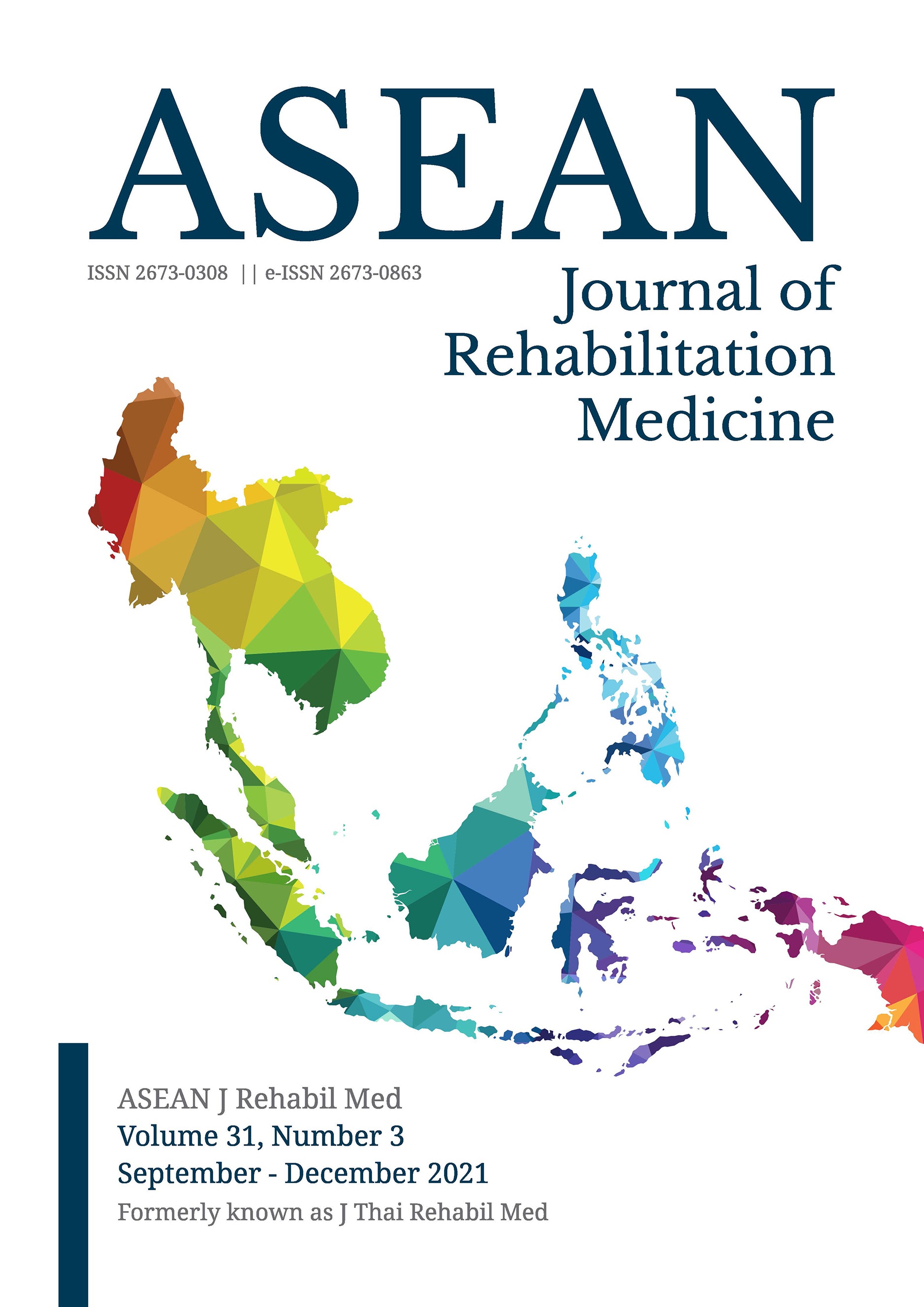Treatment of Shoulder Pain
Keywords:
Treatment of Shoulder PainAbstract
Shoulder pain, either sub-acute or chronic, is a common presenting symptom that brings patients to visit a rehabilitation physician or physiatrist. Some have been diagnosed with supraspinatus tendinitis, whereas others with frozen shoulder or adhesive capsulitis. In practice, supraspinatus tendinitis is common among middle-aged and elderly persons, whereas the frozen shoulder is commonly seen in patients with stroke.
Physical modalities have been the mainstay of treatment for shoulder pain. In the past, physiatrists or rehabilitation physicians prescribed ultrasound therapy and shortwave diathermy and ponophoresis. Nowadays, newer physical modalities, e.g., laser therapy and shock wave therapy are the more popular choices. Shock wave therapy in particular is frequently used by physiatrists and physical therapists for treatment of various musculoskeletal disorders, e.g., lateral epicondylitis, plantar fasciitis, calcific tendinitis of the shoulder. Physiologically, shock wave therapy enhances neovascularity, promotes tissue regeneration and inhibits inflammation. However, these modalities will not be effective if they are used in isolation. Physical modalities need to be combined with active exercise programs to optimize the pain reduction, increase in range of motion and maximize gain of upper extremity functions.
When physical modalities fail to provide symptomatic relief and resolution of soft tissue lesions, a more invasive treatment can be considered. Some physiatrists choose treatments such as intra-articular steroid injection, ultrasound-guided capsular hydrodilation with normal saline or glucose solution. As physiatrists are trained in performing chemo-neurolysis, e.g., motor-point block, to reduce spasticity, it is common for them to perform peripheral nerve block.
In this issue, there are three interesting original articles using different modalities and treatments for shoulder pain of various causes. One article demonstrated that phonophoresis with diclofenac gel provided better pain reduction compared to ultrasound therapy alone in participants with trapezius myofascial pain. Another article is a randomized controlled trial for treating non-calcific adhesive capsulitis. The study shows that adding focus shock wave therapy to home exercise was no better than home exercise alone. The third article shows that neither a supra-scapular nerve block or an intra-articular steroid injection was superior in reducing hemiplegic shoulder pain. These articles can provide readers with some insight on which modalities and invasive procedures to consider when treating shoulder pain.
Apichana Kovindha, MD, FRCPhysiatrT
Editor-in-chief






